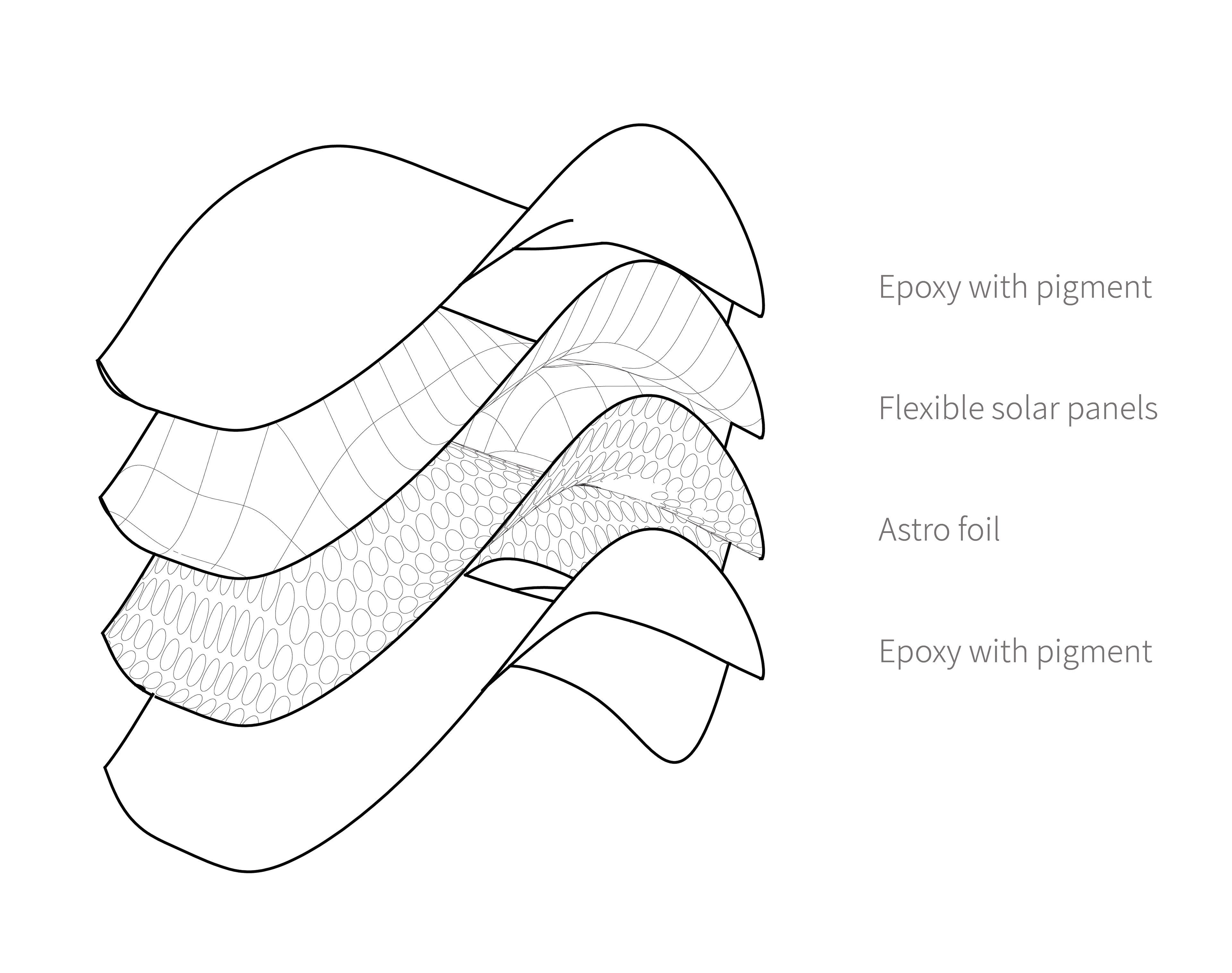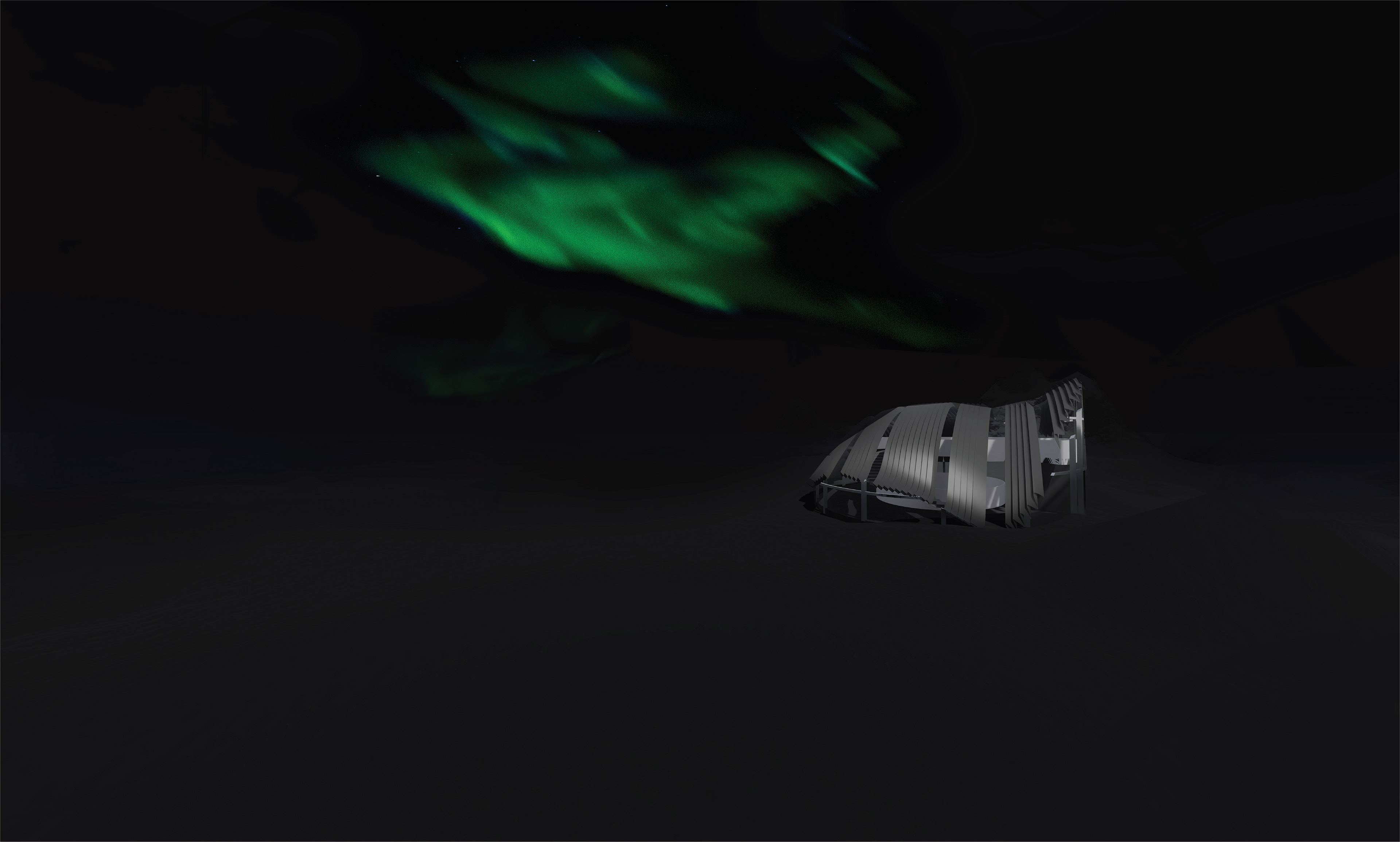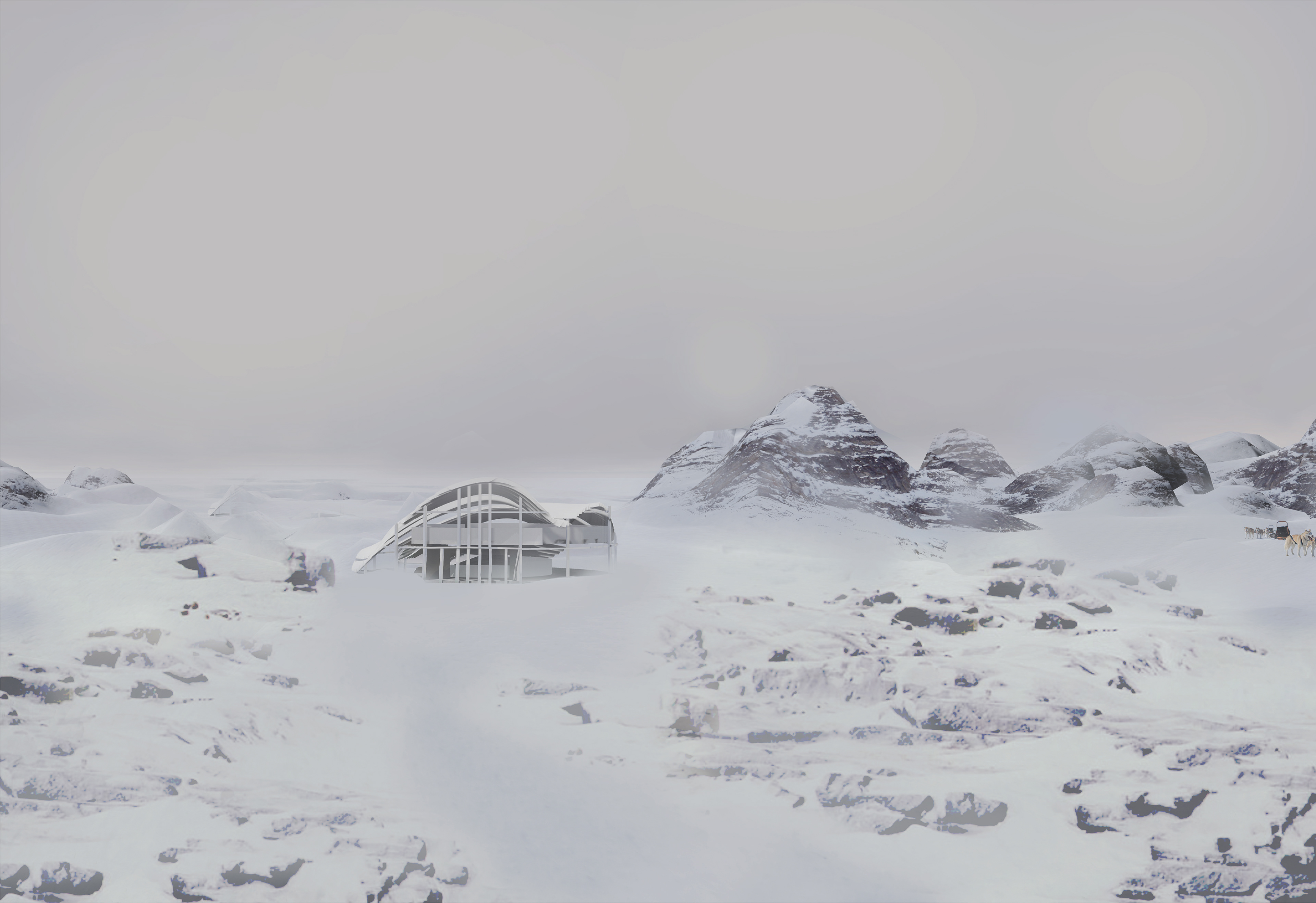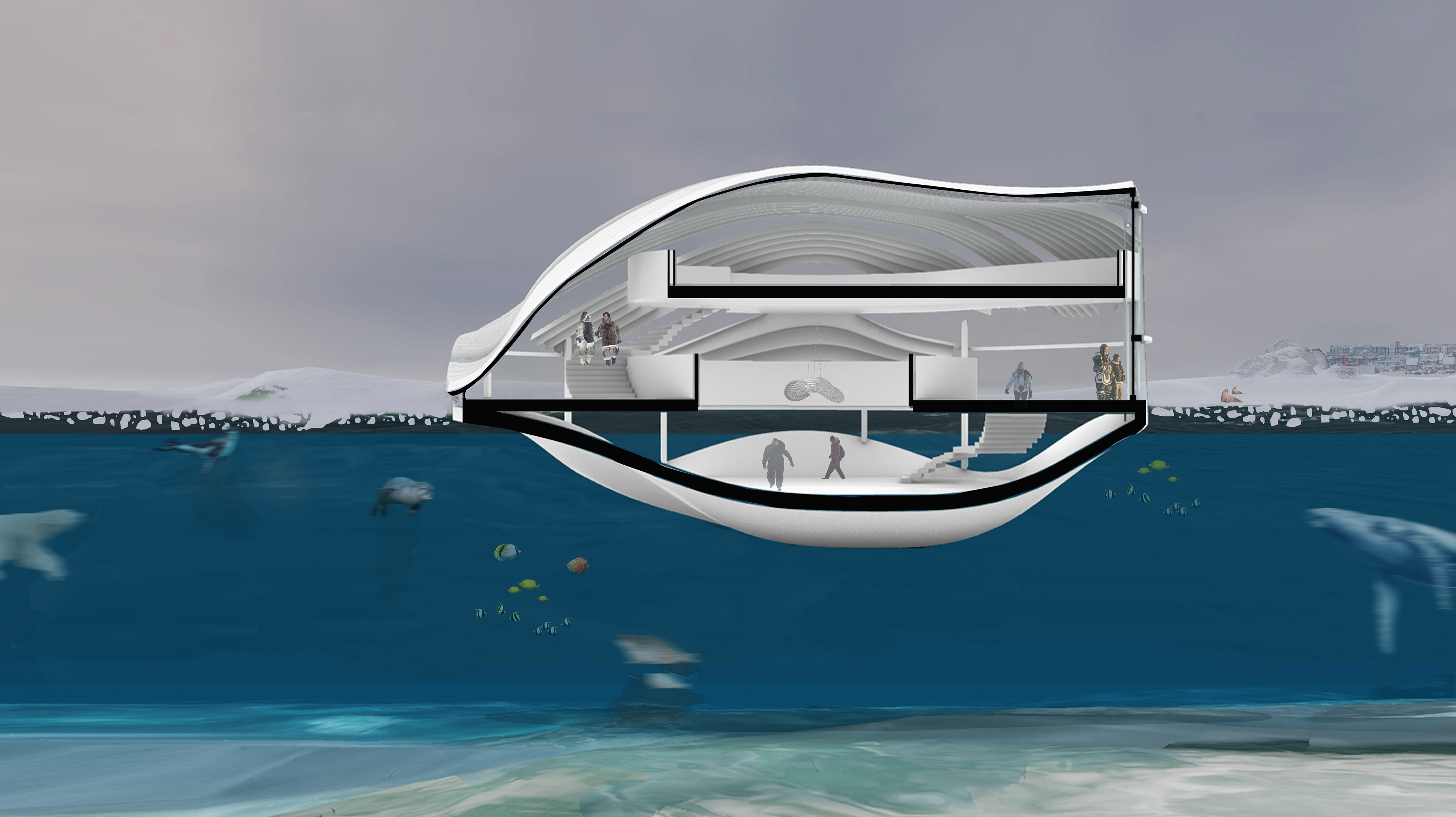After our visit to Iqaluit, we sat and thought about the impact that such an extreme climate, and its variation has on the place and the people who live there. We thought about the ocean and the changes happening over the various seasons, the fact that the ocean is frozen for more than half a year, and that in Iqaluit, unlike the area in which we live, there are actually 6 seasons. The goal was to plan an ocean research station, which would also include a community program.
The process of formal planning began by being inspired by the ocean animal world; a process called biomimicry. We choose as a starting point the marine diatom, a microalgae, which is found in the oceans. After some research, we also realized that the electricity in Iqaluit is produced by generators. In order to create an independent electricity production unit, we decided to create a floating unit producing electricity using flexible solar panels located on the shell of the building. The main planning challenge was to design a structure, which could float, and be isolated from the harsh and changing weather. We choose to isolate the solar cells in a way that is similar to what is done for spacecraft, using the lightest and thinnest possible insulation material. We test this by performing an experiment where we created an epoxy brick containing a solar panel and its insulation.
The research station is designed in a way that someone located inside should be able to observe the environment surrounding the building from almost anywhere he or she stands, providing the feeling of walking toward the frozen ocean.
We made a careful estimation of the electricity required in order to support the operation of the building, including the fact that the electricity must be stored for the winter season, a period with no sun. In order to increase the surface exposed to the sun, we tried to maximize the surface area of the shell. To achieve this goal, we created a wavy texture and adjusted this texture to the sun location. We measured the sun radiation hitting the shell, on a summer day, between 6am and 8pm. The starting point of the experiment was performed on a full shell, without openings. Then we repeated the experiment with a shell with a first opening, and saw that, as expected, there was a significant drop in the amount of exposure to sunlight. However, after increasing the surface area with the wave texture we designed, we could observe a slight increase in the exposure to the sun, and finally by shifting the texture, we succeeded to even exceed the amount of the initial solar exposure.




